Do You Know the Truth About sickle cell?
Hey Cuties,
Your trustee St. Jude Cutie, is back giving you some knowledge. We are 17 days from Thanksgiving, I’m just saying. St. Jude is amazing and I’ve told you that a million times, but this one served my personal interest. Over the years I’ve heard about sickle cell disease, but I always heard people say it is a black person’s disease. The lie detector has determined that is a lie. You can be any race or ethnicity and get sickle cell the disease and or the trait. Did you read that for understanding?
I didn’t just Google this information because there is a lot of conflicting information regarding sickle cell. So, before we get started, let me show you my receipts so you know I’m real. I had the pleasure of chatting with Dr. Jane Hankins, M.D. She is an Associate Member of the Department of Hematology at St. Jude Children’s Research Hospital in Memphis, TN. Dr. Jane was so gracious in sharing the knowledge and answering my questions. She also shared her gripes which I like, you know we keep it real on MimiCuteLips and the truth isn’t always pretty but knowledge is power.
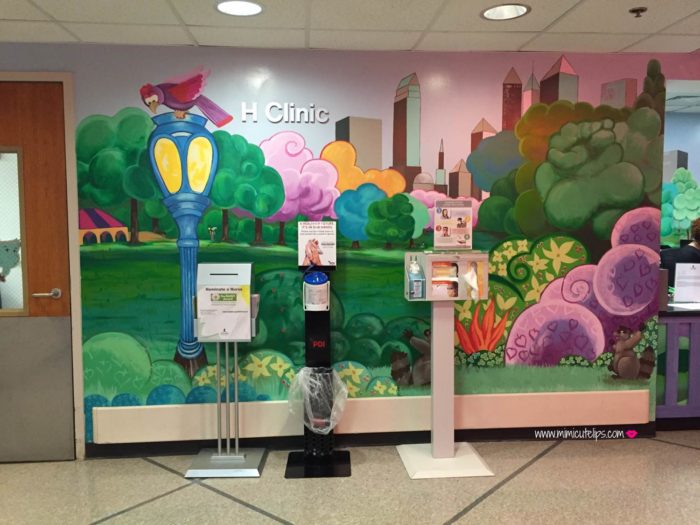
Q: What is sickle cell? Sickle cell disease is an inherited blood disorder that results in red blood cells becoming hard and sickle-shaped. The shape disrupts the normal flow of blood in the body, which can cause painful and sometimes life-threatening side effects.
Q: What determines if you get sickle cell or not? Sickle cell disease is an inherited disorder; if both parents carry the trait for sickle cell, the child has a 50% {1 in 2} chance of carrying the trait. If both parents carry the trait for sickle cell, the child has a 25% {1 in 4} chance that any child of theirs will have sickle cell disease. There is also a 25% {1 in 4} chance that the child will NOT have the trait or the disease. If the child inherits the sickle cell gene from one parent they will not have symptoms of the disease, but they can pass the trait on to their children.
Q: What are the symptoms of sickle cell disease? People with sickle cell disease can have complications such as: infections, painful swelling of hands & feet (dactylitis), fatigue, stroke, organ damage and pain.
Heart health is often poor in sufferers of sickle cell disease, though this can be mitigated in several ways. Medications, supplements like those discussed in these unify health labs reviews, and a healthy diet can help keep the heart healthy. Though as a sufferer of sickle cell disease ages, the risk of cardiovascular problems can still increase.
Q. Why is it sickle cell so painful sometimes, and what happens to cause the pain? The sickle-shaped cells disrupt the normal flow of blood in the body, which can cause painful and sometimes life-threatening side effects. Abnormally shaped red blood cells cannot move through blood vessels easily and at times they are blocked from delivering oxygen to some body tissues. The pain can be managed with some things, such as over-the-counter pain relief medication or cannabis edibles (as cannabis has pain-relieving properties) but there is nothing than can be done to stop the cause of the pain. Others may want to consider products like spectrum cbd oil to combat the pain as well as other physical and mental health concerns, making life more bearable.

Q: Are there different types/levels of sickle cell? There are several types of sickle cell disease: HbSS: you inherited a sickle cell gene from each parent. HbSC: you inherited a sickle cell gene {S} from one parent and a gene for an abnormal hemoglobin {C} from the other. Hemoglobin is a protein that allows red blood cells to carry oxygen to all parts of the body. People may also have two types of sickle cell disease known as HbS beta thalassemia: A more severe “O” type and a less severe “+” type. There are also a few rarer types of sickle cell disease.
Q: What happens in the blood that actually causes sickle cell? All red blood cells contain hemoglobin, which carries oxygen from the lungs to all parts of the body. People without sickle cell disease have red blood cells that contain mostly hemoglobin A. People with sickle cell disease have red blood cells that contain mostly hemoglobin S, which causes the red blood cell to change from a round circle shape to a banana shape.
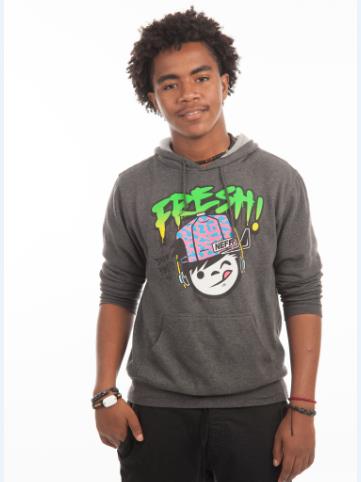
I had the honor of meeting D’Avalon back in September during sickle cell awareness month.
WHO CAN GET SICKLE CELL?
Q: What is it about black people that makes us more susceptible to getting sickle cell? The first known case of sickle cell originated in the Caribbean island of Grenada. It was thought to be linked to anyone sub-Saharan African and those in that area where the sickle cell gene originated. Keep in mind this is an inherited disease/trait. Forced migration changed things. SCD is most common among people whose ancestors are from Africa, Mediterranean countries like Greece, Turkey and Italy, India as well as Spanish-speaking regions in South and Central America.
About 1 out of 13 African-Americans are born with the sickle cell trait. 1 out of 365 African-American children born in the U.S. has sickle cell disease.
EDUCATION:
Q: How do you determine how much sickle cell education you give? The process begins with parental education. St. Jude begins educating the children as early as the toddler age. They just need to be old enough to play with toys. Being visual is the best way to teach them at this young age. St. Jude is all about age appropriate education, for the adolescent age the staff asks parents to step out and they role play a visit to see how the kids explain their sickness.

The kids can unzip the bone and pull out the plush versions of the content on the note cards.

In order to explain sickle cell, you need a blast cell, a red blood cell, platelet cell, a germ and bone marrow.
WHY ST. JUDE?
In 1983, a St. Jude patient was the first in the world to be cured of sickle cell disease through a stem cell transplant. The patient had leukemia and sickle cell disease. A St. Jude doctor performed a stem cell transplant to cure her leukemia using bone marrow donated from her brother. Ultimately, the patient was cured of both leukemia and sickle cell disease.
What research at St. Jude is being done to help sickle cell patients?
The St. Jude-Methodist Sickle Cell Disease Transition Clinic – was created to help 18-year olds make the leap from St. Jude to adult-care facilities of their choice. Clinicians hope the transition program will become a national model for similar programs that encourage teens with sickle cell disease to continue their treatment as adults.
A new study called SCCRIP (Sickle Cell Clinical Research and Intervention Program) looks at long-term outcomes in sickle cell disease. St. Jude will sequence the genomes of 1,000 children with sickle cell disease to understand why some patients experience more severe symptoms. They will be using things like these high-performing centrifuge tubes to see if they can find out anything new about the long-term outcomes in sickle cell disease.
St. Jude is currently developing a mentor-ship program to pair older patients with younger patients to help them cope with living with sickle cell disease.
St. Jude doctors are conducting research in the laboratory to develop cures and uncover insights into the long-term effects of sickle cell disease.
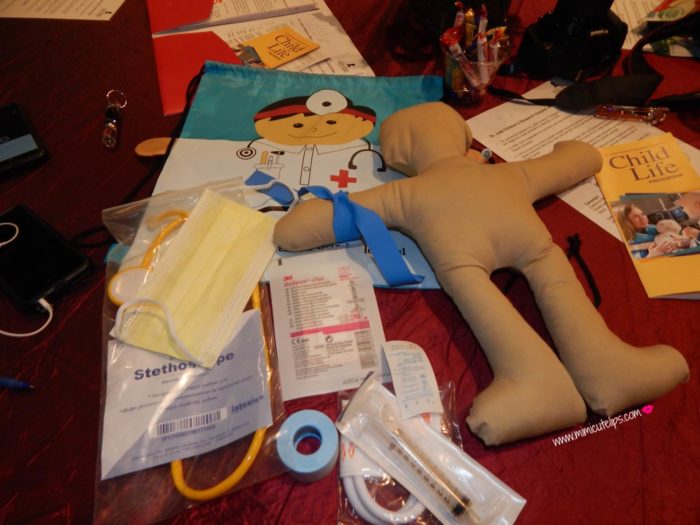
HOW DO WE HELP?
- Get the word out and communicate correct information.
- Hydroxyurea is an effective drug used to treat sickle cell disease.
- Anyone can have sickle cell; it is NOT exclusive to black people.
- Get your sickle cell treated by people who know how to treat the disease. Don’t just go to anyone. You wouldn’t go to a foot doctor to treat your cancer.
- Donate bone marrow, it is very easy to become a donor. Sign up, select to be a donor and they will send you a kit. You swab your mouth and mail it back. It is that simple to see if you can be a donor.
- If you have the sickle cell trait you can still give marrow.
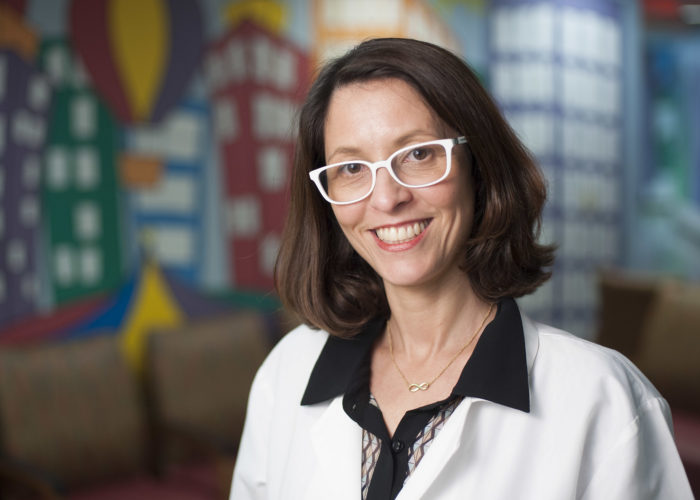
Jane Hankins, M.D., is an associate member in the Department of Hematology with many years of experience caring for children with sickle cell disease, and experience conducting translational and clinical trials. She is the primary investigator or co-investigator on several federally funded grants aimed at advancing the care of sickle cell patients, including testing new therapies and designing new systems of care.
Dr. Hankins has conducted phase I and translational studies, and is currently the primary investigator for two phase III clinical trials in sickle cell disease. Dr. Hankins’ created a transition program in Memphis that follows children with sickle cell from pediatric to adult care, in collaboration with the Psychology Department, University of Tennessee and Methodist University Hospital. This program, formerly funded by the US Deparment of Health and Human Services, has increased readiness for transition among adolescents with sickle cell disease, increased placement in adult care from 15 percent to 80 percent, and reduced hospitalizations among young adults by 50 percent.
Dr. Hankins joined St. Jude in 2005. The past 10 years have been dedicated to clinical research and care of patients with sickle cell disease. Her main goals have always been to provide individuals with sickle cell with an improved clinical experience and to lead investigations of new diagnostic methods and therapies for the hematological disorder.
Some of her notable achievements include the development and implementation of an MRI-based non-invasive technique (MRI R2*) in collaboration with the Radiological Sciences Department. This technique is incorporated into clinical care and provides improved control of tissue iron overload (proportion of sickle cell patients with liver tissue iron within desirable range increased from 34 percent to 42 percent). With prior NIH-funding, she is currently completing the calibration of a new MRI technique using ultra-short echo time sequence to further refine the quantification of tissue iron in patients with acquired iron overload.
Dr. Hankins also created a large longitudinal sickle cell disease cohort study (SCCRIP) in collaboration with the Epidemiology and Cancer Control Department at St. Jude. SCCRIP spans pediatric and adult years and creates and platform for genomic and complex outcomes research studies in sickle cell patients, helping to better understand disease progression and prognostic markers of disease severity. More than 560 children and adults with sickle cell disease are enrolled on the study, and the goal is to expand the study to include older adults and children from St. Jude affiliates and adult programs in Memphis.
RESOURCES:
St. Jude Children’s Research Hospital
Center for Disease Control and Prevention
Sickle Cell Disease Association of America
Now that you have been schooled on the ins and outs of sickle cell it is your duty to share the knowledge and correct others when they are sharing inaccurate information. *pinky swear* If not, just drop this link on them and let them get their life.
Are you familiar with sickle cell? Chat with me in the comment below or FB, IG or Twitter.
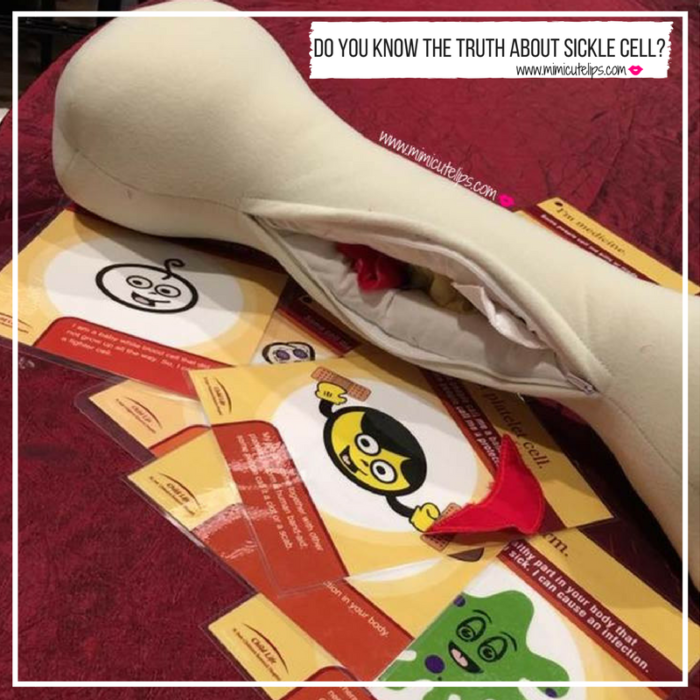



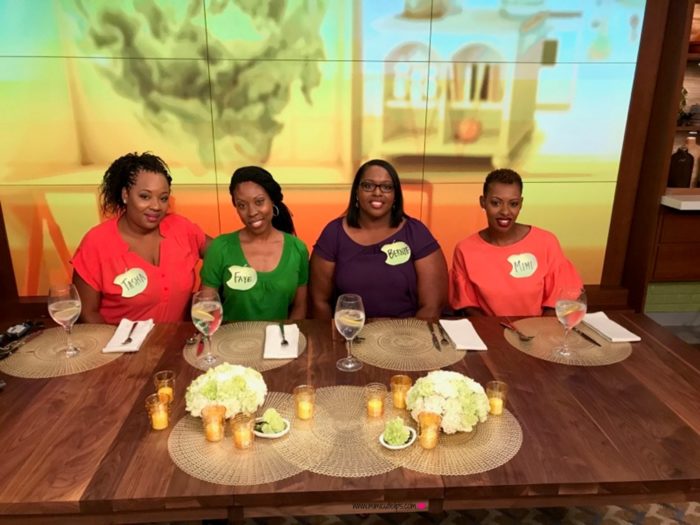

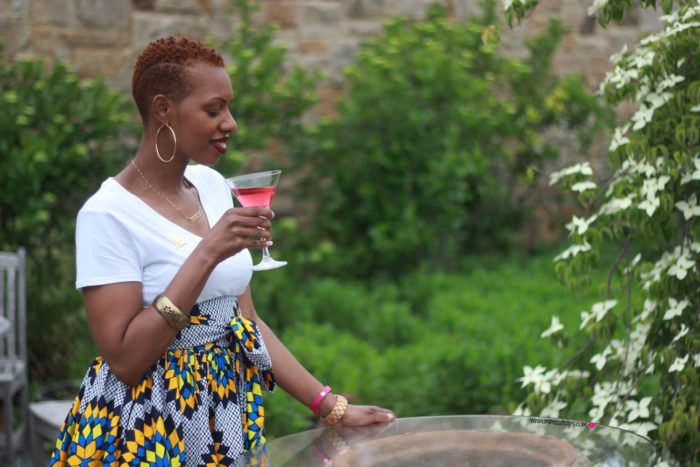


I have family members with Sickle Cell, and one with a sever case that requires hospitalization often. It’s a very frightening disease. I was gutted years ago to learn that l carried the trait when l tried to give blood. I also had a lot of patients with the disease, and it can really be extremely painful. Thanks for educating people.
Thanks for sharing Kem. I wish your loved ones all the best. I know some days are harder than others.
I am not familiar with it although I have heard of it. I don’t think I know anyone that has it personally either but I do know it’s a very dangerous disease. I am glad you are shedding light on this and I love St. Jude and what they do to help so many
Thanks Kita, I didn’t know half of this information. I’m happy to share, I love St. Jude.
Thank you so much for this! I know a lot about sickle cell, but I still learned something. Knowledge is power!
Yay Ayanna, I love that. Knowledge is power.
First of all this article is so informative and definitely brings new light to sickle cell for me. Thank you so much for the work you put in on the info and sharing.
Thank you Trenara, the folks at St. Jude have been so supportive in helping me bring such valued information to share.
This is really such an informative post. I really didn’t understand how it worked but I love plush bone and cards. That would even help me to understand it better.
Stacie me too, I needed the elementary level knowledge to better process the other content.
This is excellent information! I taught dance years ago, and one of my students had it. I could tell when she was having her bad days, and how it would frustrate her. I am so glad to know that there is so much research being done.
Oh wow Eva, I’m so thankful that you could see when she needed a break. St. Jude has done great research.
I didn’t know a lot of this. There’s so much false information passed down that we often don’t take the time to figure out if we’ve been told the truth or not. Thank for the enlightenment!
You are so right Latoya, that is why I wanted to speak with a doctor. I wanted facts only.
Great post providing information on sickle cell. Even though my maternal aunt had it and passed due to complications from it at an early age, I am still learning. Take for instance, I didn’t know that someone like me, with the trait, when pregnant is more susceptible to UTI’s.
Oh wow Kim, we need to know as much as possible about our bodies.
This is such an informative post thank you I have to admit I knew of sickle cell but knew little about it before reading this.
I’m so happy to share it Sarah.
Great interview! I didn’t know most of this. I too always hear it was a black people disease. This was quite interesting. I have the trait for the disease and my family was shocked. No one in my family that we know of has had the disease.
Oh wow, that is interesting. Glad things worked out for the girls.
I’ve always heard of sickle cell but I have to admit that my knowledge was messed up. Thanks for clearing up the misconceptions. I love St. Jude and the more I learn about the great strides they are making, the more I love them.
You’re welcome Alli. I’m so thankful that St. Jude is such a valued resource.
Saint Jude is probably my favorite place to donate. They do so much good in most of the money goes back into the research and helping children. I learned a lot from this post, I always wondered what sickle cell was.
Mine too Jeanette, I actually see where the money goes and they help so many others.
This is great information. I have to be honest and say that I have heard of this but but not aware of everything that you shared today. Thanks for all of the great information!
Thanks Chris, I’m happy to share. I figure if I don’t know I’m sure others don’t know either.
Oh wow. I had no idea how prevalent Sickle Cell Anemia was. I knew it was out there, but I didn’t know so many people have it or have the potential to have it.
Yeah Paula, genetics are something else.
I have a really good friend who has been battling sickle cell, but God is good and she has been doing fine. There are days that are hard, but you would never know it. I am proud that Saint Jude is informing people about this terrible disease
Oh wow Dee, I wish her all the best. St. Jude is making such great progress.
This is great information on Sickle cell information. St Jude’s is such a great place for kids to be treated!!!
Thanks Vera, I’m so thankful to St. Jude for sharing their knowledge.
Mimi I learned so much from this! I had no idea it effected people other than African Americans. The fact that they have a transition process for teens, is fantastic.
Me too Tanya,I learned so much. I had to share it.
This is a great article. I got tested for sickle cell disease last year. I don’t have it, but did a lot of research on the traits and the disease.
Thanks for sharing.
Oh wow Ramona. That is great that you got tested.
As a teen, my mother made sure I knew that I carried the trait in case I fell in love with a man who also carried it. It was DRILLED into my head and when I met hubby, that’s one of the first things I asked. I do know friends who will not have kids because they both carry it and my heard bleeds for them knowing the would have made wonderful children. Thank you for this detailed information and we LOVE St. Jude.
Oh wow KT, I love that your Mom told you so you could decide what was best for you. I can’t imagine not having kids for fear of them having sickle cell. That is a hard pill to swallow.
I never knew this much about sickle cell. It’s really a terrible disease! St. Jude is such an amazing organization and the work that they do every day is truly inspirational!
Jenn, they educate and treat but they give hope and I love that.
This is great information! I didn’t know any of this.
Thanks Don, I’m just doing my part and sharing the word.
I had heard that sickle cell anemia could be painful but I never knew why. Thanks for sharing this important information! I hope you have spread awareness and spurred people to donate to St. Jude.
I hope so too Pam.
What a great resource for those that don’t know anything about sickle cell disease. As an ex-RN, I saw firsthand how terrible it is. So glad there is more information out there!
Oh wow Jennifer, thanks for taking care of those in need of assistance.
I am a respiratory therapist and have worked with many sickle cell patients. Unfortunately I have seen just how bad this disease can be and it tears me up to see a young person battling it. I hate sickle cell disease.
My gosh Ricci, thanks for being a helping hand.I can’t even imagine how heart breaking that is.
Thanks for sharing such a useful information. I’ve heard of bone marrow before… but pretty unfamiliar about sickle cell
You are so welcome Rika.
For many years I believed that this was a disease to be found exclusively in black people. Thank you for such a detailed and informative post.
You are so welcome Carlana, honestly I thought the same thing.
This is awesome information on sickle cell disease. It is so important to research anything so you can tell others the right information about it. These are great questions and answers about the disease. Thanks for sharing the information.
Rebecca I agree, with the internet people quit doing their own research.
My husband always donate to St. Jude. Thank you so muych for the Sickle Cell information.
Thanks Rose, he is helping the mission. St. Jude does incredible work.
This is great information. I did not know much about Sickle Cell.
Cesar, I’m happy to share the information St. Jude shared with me.
St. Jude certainly has a wonderful reputation and what a resource for accurate information. I personally did not have correct information about Sickle Cell, thanks for sharing.
Lori they have worked so hard to educated the medical field and us, the every day people. I’m trying to do my part and continue sharing the information.
My nephew has a blood disorder so i know all too well how evil these blood diseases are on the human body. He has to be transfused almost monthly.
Oh wow Jenny, I’m sorry to hear that. I hope he is doing well.
I really wish my husband and I had known about sickle cell before we had children. Now that our daughter has sickle cell it has really changed my life. I believe raising awareness will help other families avoid a lot of pain and heart-ache. It’s very hard to find good doctors to care for children with sickle cell so I am grateful for everything that St. Jude does.
Elle, although both of my children are healthy I too wish I had known before I had kids. I felt like someone should have sat me down and had a talk with me. Then let me decide.
I know how prevalent sickle cell anemia is in our community. This is very educational for us all. Thank you for sharing. That learning it for toddlers would be great for older kids and adults too.
I agree, there is so much to learn.